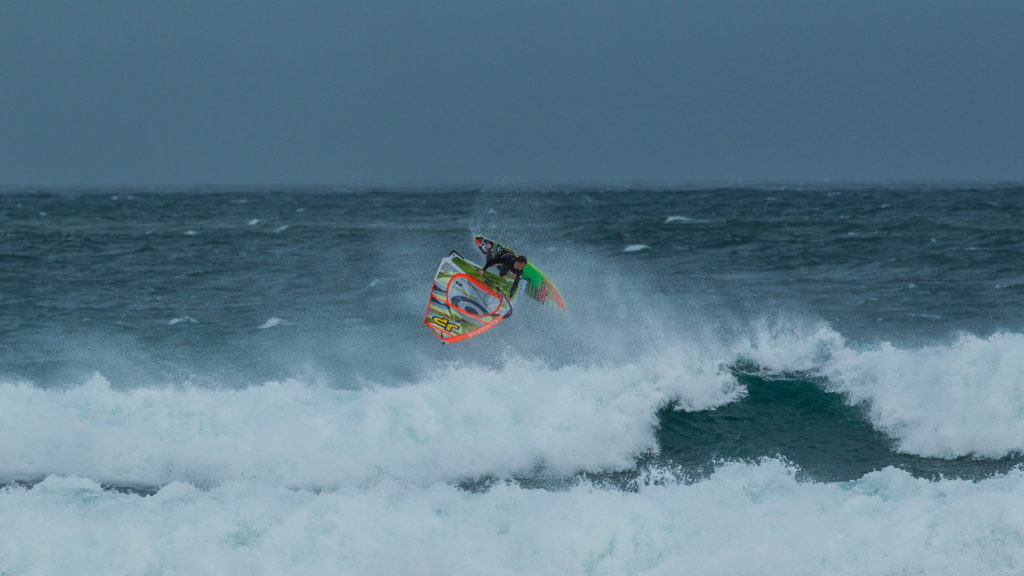13th Beach
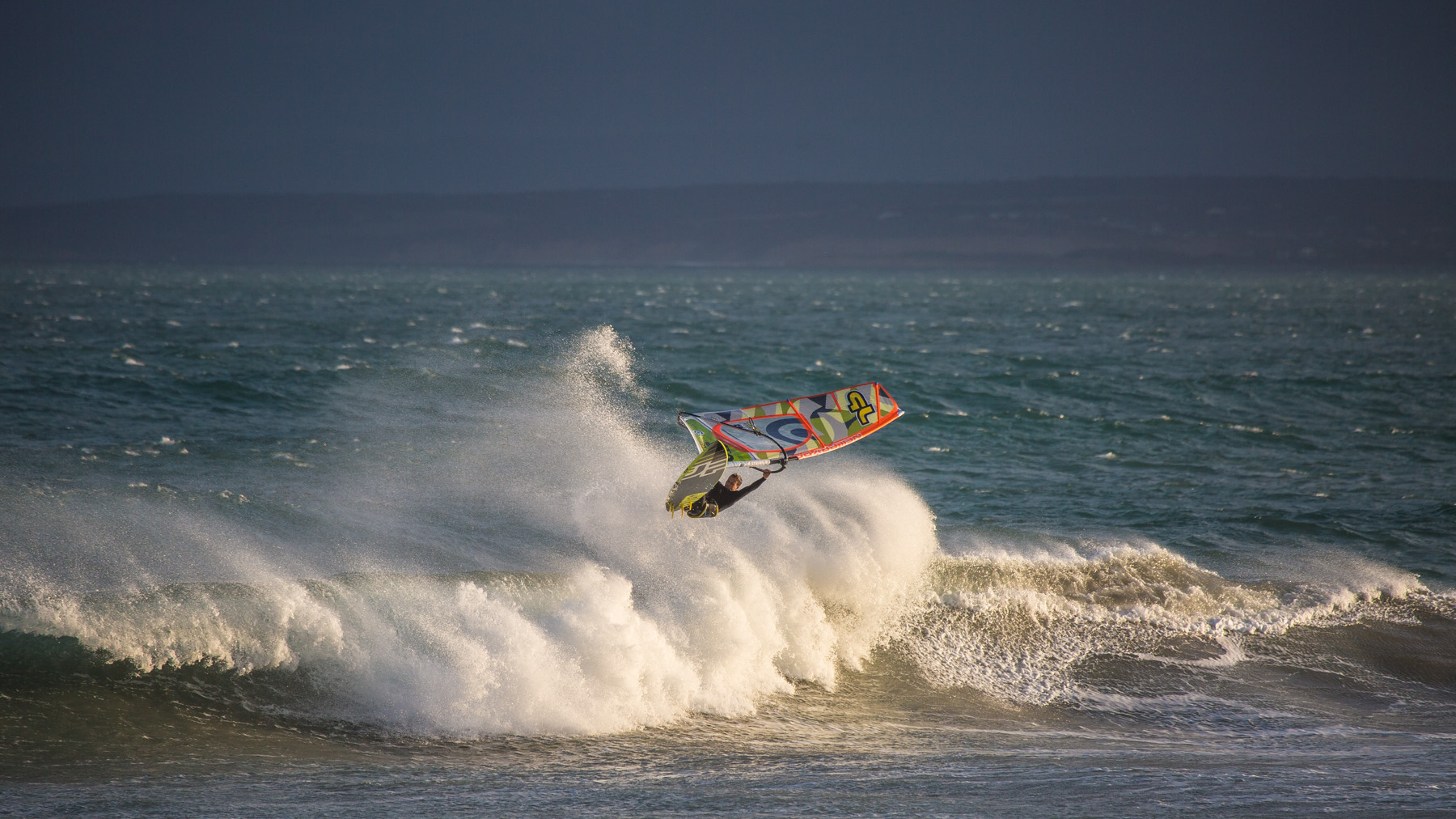
13th Beach is the go-to option for Surf Coast sailors on any W-NW wind, and is also popular with the Melbourne crew being a relatively short drive from the city.
13th picks up a solid amount of swell, and can offer pretty good starboard tack beach break riding on the right day. The spot is fickle though, with many sessions cut short by fluky, frontal wind. On smaller days 13th is suitable for a range of abilities, and when it is big it becomes quite challenging with most opting to move up to the nearby Poo Point.
On bigger swells the Ant’s Bombie out the back of the main sailing area is a feasible windsurfing option for an adrenaline rush. This wave holds big size, but is reasonably mellow, unlike the famous Beacon Bombie – a powerful right hand reef breaking about 1km offshore. The Beacon Bombie could be one of the best windsurfing spots in Victoria for those with the balls and the resources to handle the difficult logistics.
Optimal Conditions:
25 knot+ WNW wind, mid tide and a moderate swell for a mix of good jumping and riding. 25-30 knot NW wind and a moderate swell for pure down the line riding.
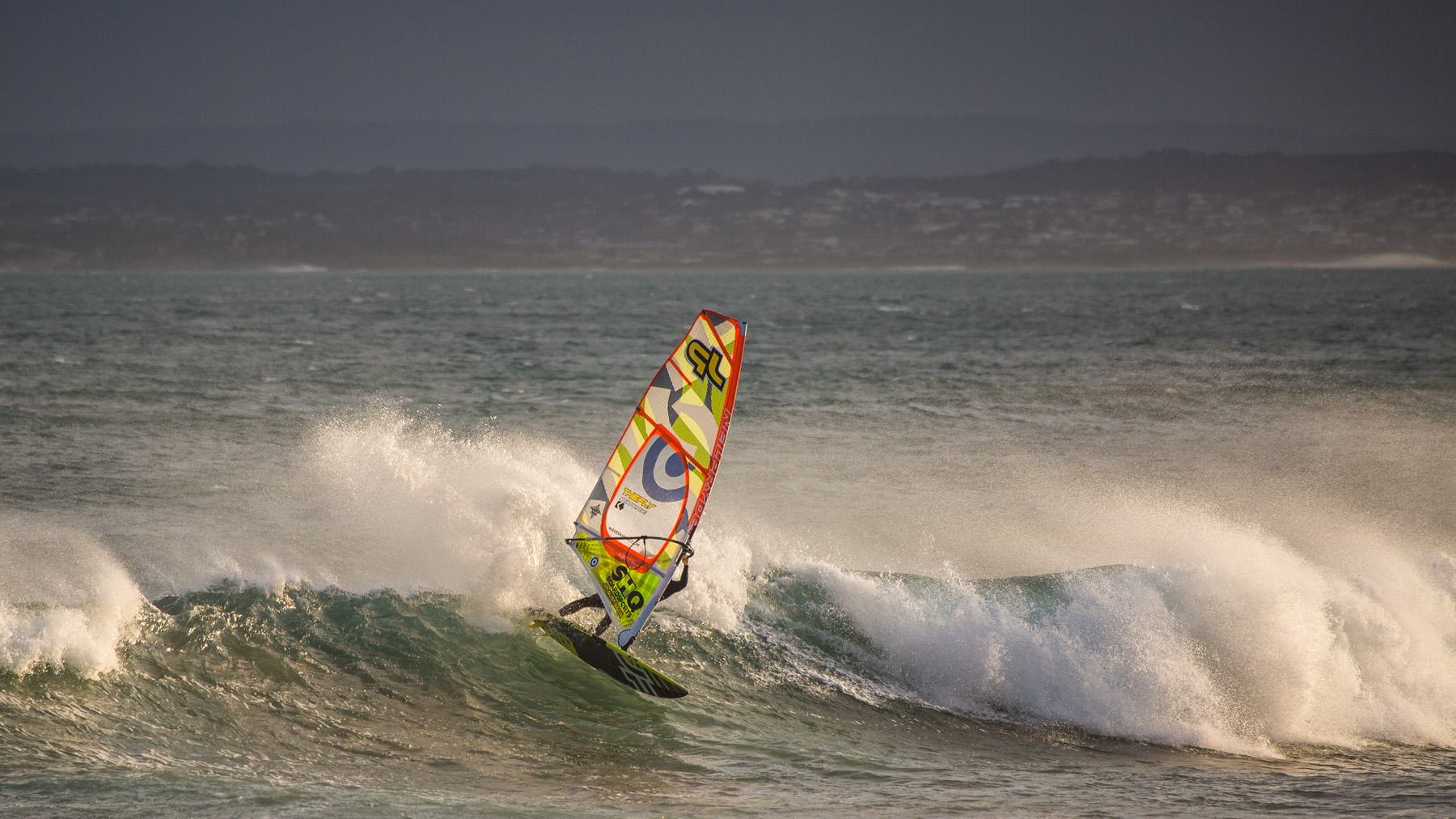
Above: A classic frontal day at 13th Beach, sunny and windy one minute and raining, no wind the next. On NW wind days the wind is often fluky and hard to manage – the risk of being skunked after a big drive from the city is always present.
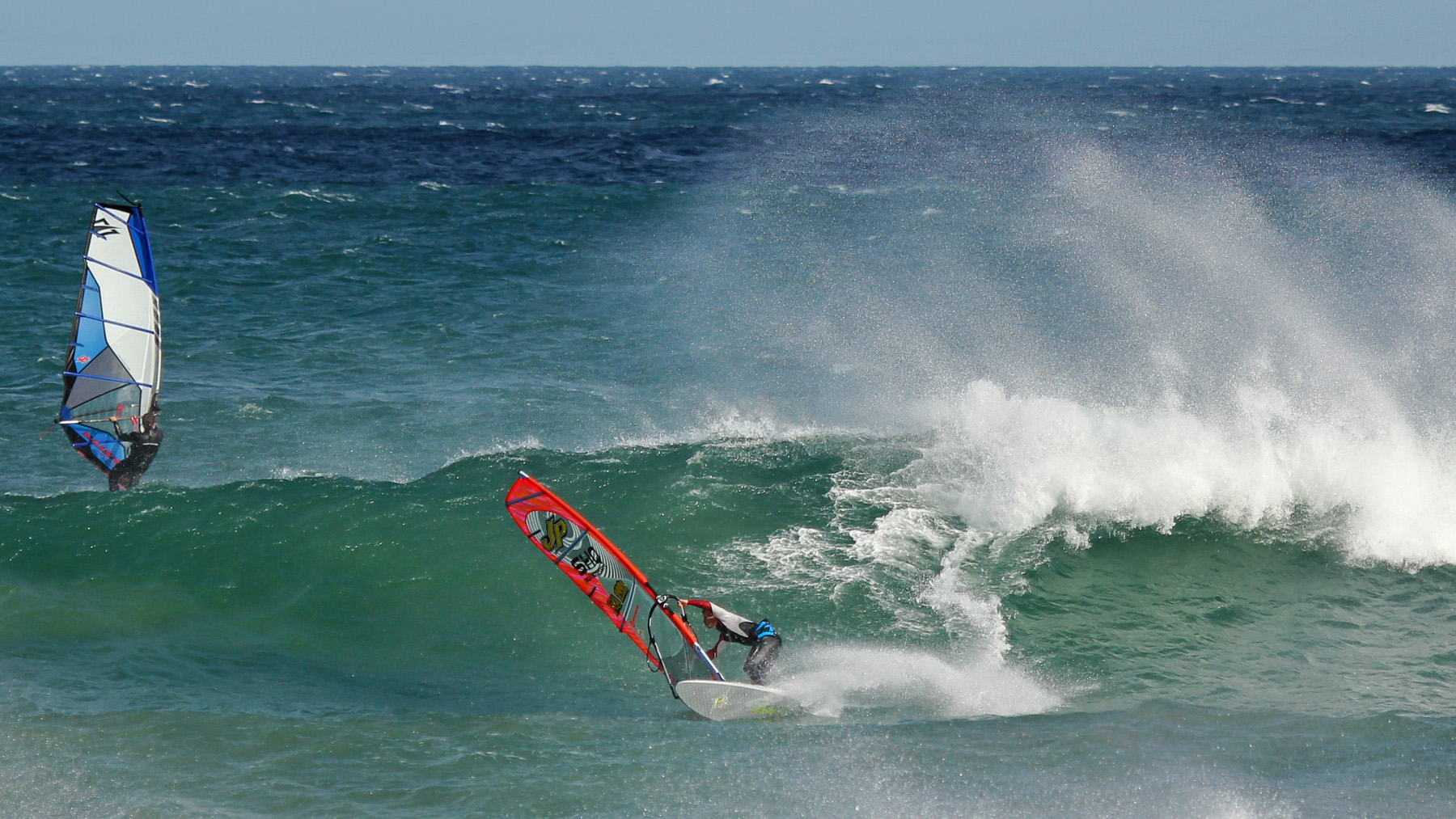
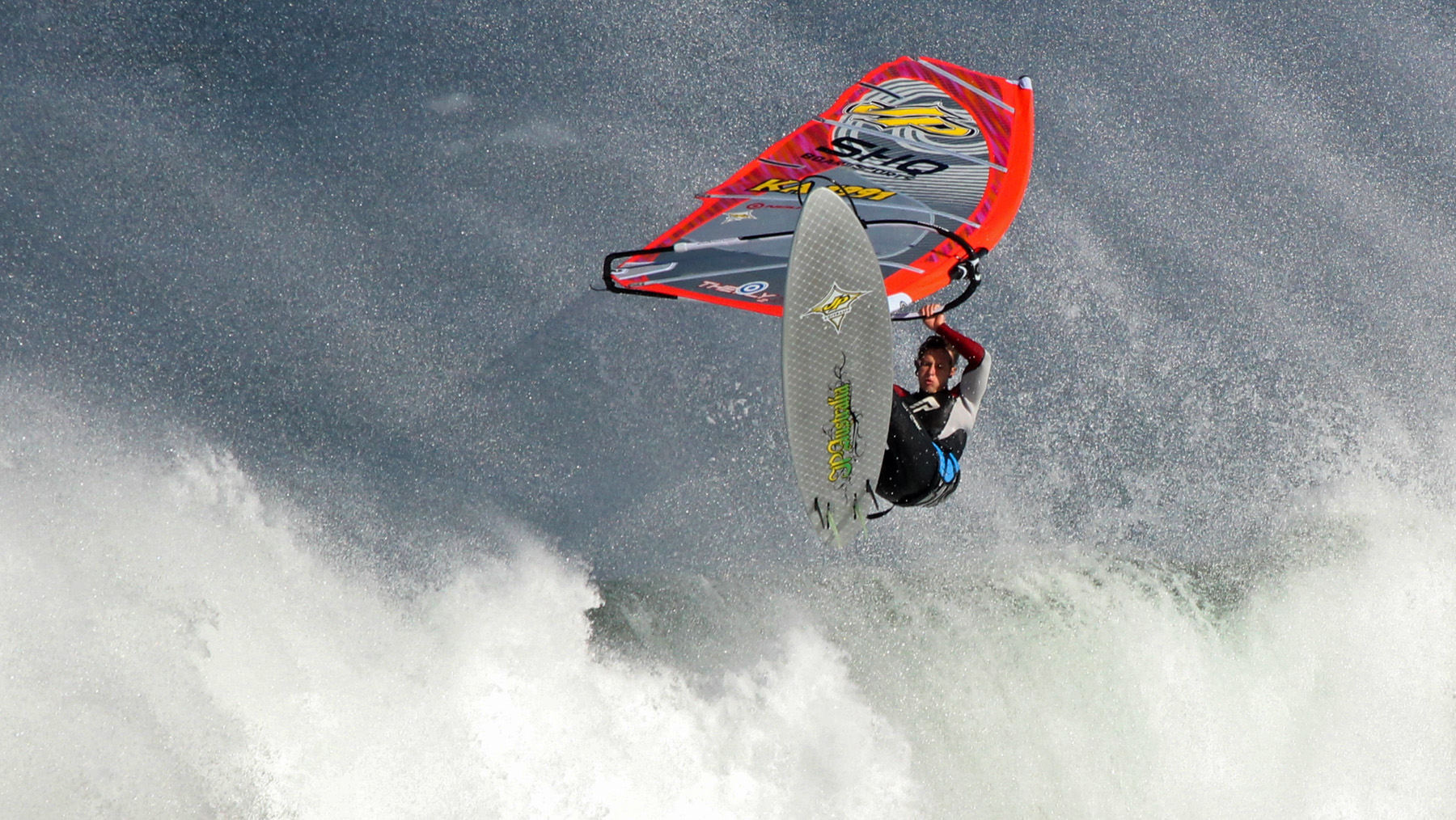
Above:
1. A decent session at 13th, note that the rider in the background is not planing despite their large sail. Do not expect to be powered up the whole time out here. Navigating the break on a solid swell and fluky winds can be very challenging.
2. At 13th the waves tend to stack up and break in different depths – crumbling out the back, then standing up steeper in the middle (pictured here) and closing out close to shore.
Key Stats:
Wind Direction:
Works on anything between W and NW. W is cross onshore and offers fun jumping on small to moderate swells. WNW is generally cross shore and can provide a good mix of riding and jumping. Straight NW is proper cross offshore and gusty but offers clean faces for down the line riding.
Swell:
13th Beach picks up a few feet more than the Surf Coast reefs, and a few feet less than the open beaches on the Mornington Peninsula. So, it isn’t really a true swell magnet option like Gunnamatta or Woolamai – there needs to be some sort of swell running for it to be good. That being said, it quickly can get big and hard to windsurf at size – so as a general rule anything between 2-5ft on the Swellnet Barwon Heads forecast should be workable.
Refer to notes on wave height.
Tide:
High tide is generally not a good option at 13th as it creates larger wind shadows and less beach space to launch and get out through the break. Low tide makes this more manageable, and the best wave quality is likely to be more-so around mid tide.
Rider Level:
13th Beach is suitable for a range of levels, depending on the conditions. With small swell and cross or cross onshore wind it is a good place for beginner-intermediates. On big swells and NW wind, even very experienced riders can have trouble getting out due to the gusty wind and large walls of whitewater. Assess the conditions and match them to your ability.
Hazards:
Wind Shadows
The cliffs and sand dunes at 13th Beach are considerable – and this obviously can create problems if the wind has any element of offshore (~WNW-NW). For inexperienced riders, small swell and W-WNW wind is ideal. As the wind swings more to the north 13th Beach requires greater levels of skill to get in and out through the break in gusty wind – higher volume boards are a good idea.
Rocks
13th Beach is scattered with rocks and reef. Towards the Beacon end of the beach (to the east) there is not a lot of sandy beach. Sailing at Ant’s there can be small areas of rocks and reef, usually downwind of the carpark, but this depends on tide and how the sand has been shifting around. Keep an eye out and be conscious that getting caught downwind could mean getting washed into a lot of rocks.
Shorebreak
High tide, decent sized swell, fluky NW wind – a recipe for getting annihilated in the shorebreak! This is especially bad if you’ve drifted downwind to a rocky zone. In general the shorebreak and the wind on the inside is better on lower tides as it creates more beach space to get away from the cliffs.
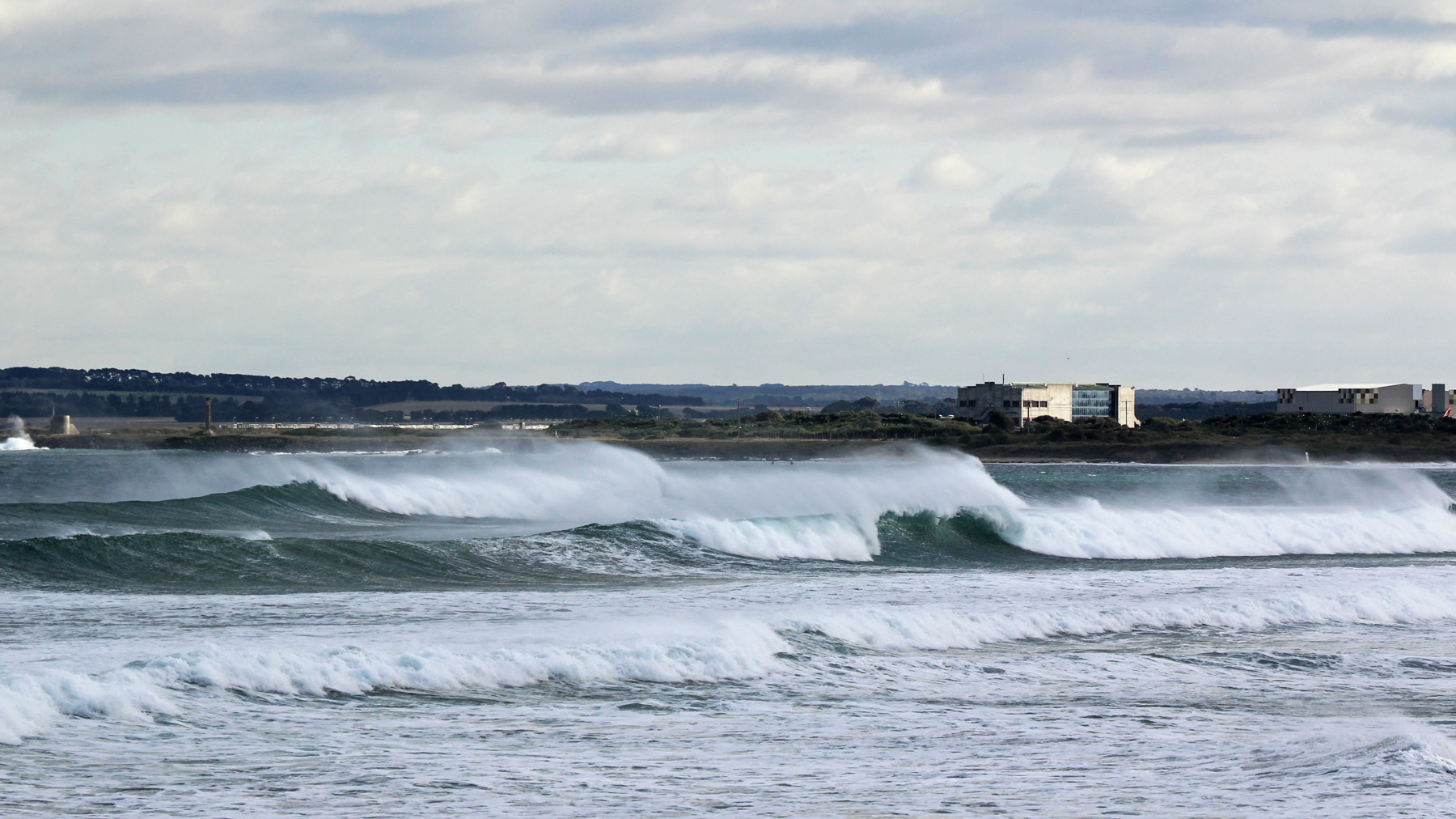
Above: Looking to the west towards Poo Point from the lookout deck at the Ant’s carpark. On decent sized swells the waves tend to get rather shapeless and random. Here you can see a fat right breaking into a narrow rip, and the middle section breaking and washing through to shore. On days like this there is a lot of whitewater to negotiate on the way out.
Below: Most people sail straight out the front from the Ant’s carpark pictured here. This is a solid day under a strong NW wind. The size of the swell is overwhelming any decent sand banks and resulting in pretty poor wave quality – fat and choppy out the back and closing out on the inside.
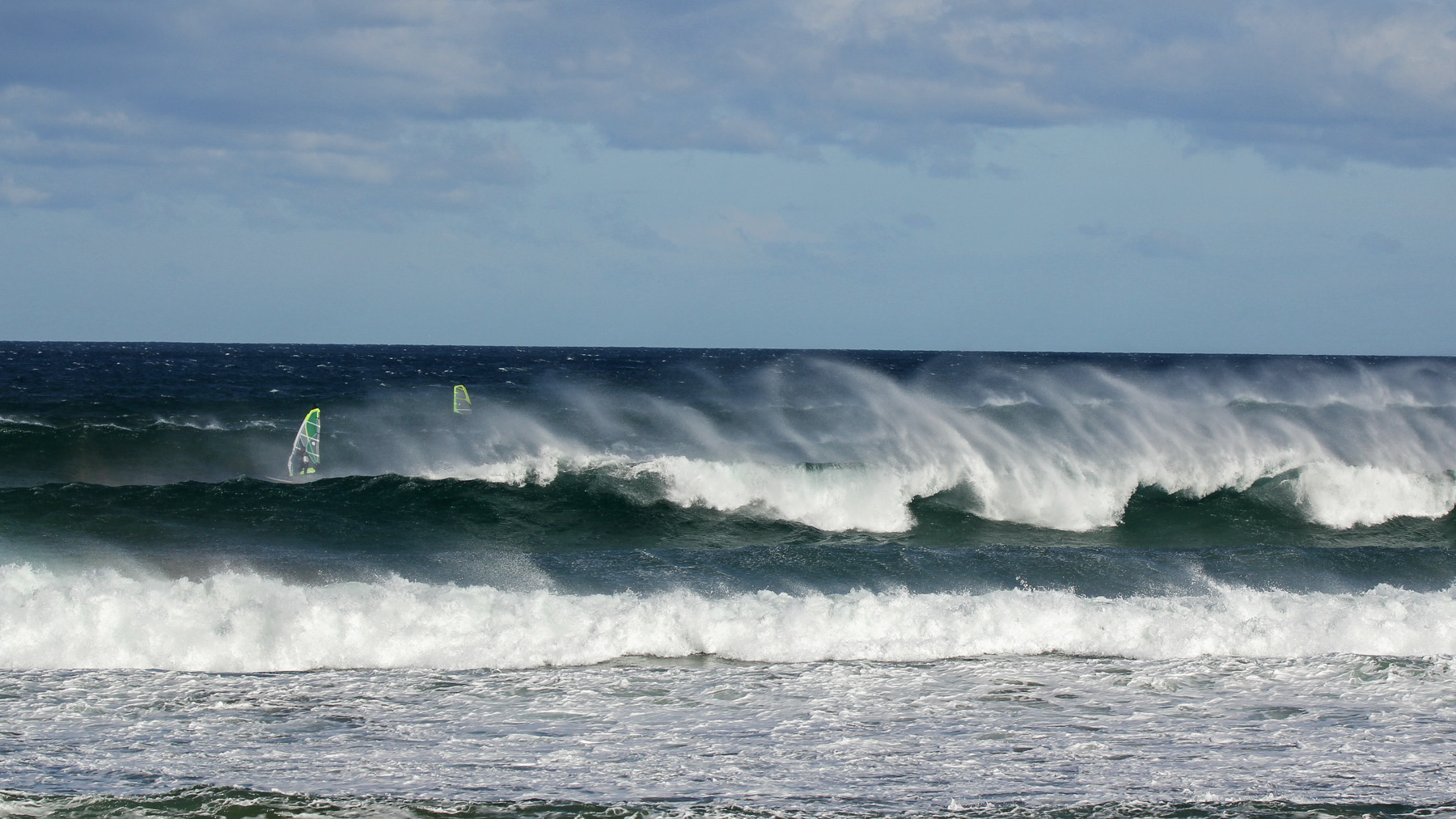
Forecasting Resources:
The best conditions at 13th generally rely on strong frontal systems from the West to North West, which means it is usually best in the winter months. That being said, 13th picks up significantly more swell than Poo Point so even weaker systems in summer can have adequate swell for a decent session.
Current Swell:
Check the swell forecast on Swellnet for the Mornington Peninsula here, and for Barwon Heads here. The Mornington Peninsula forecast is for the open beaches is always going to be at least a few feet bigger than at 13th Beach. The Barwon Heads forecast tends to under call the swell, expect it to be somewhere between these two forecasts – but leaning more towards the Barwon forecast range.
Check live readings from Pt Nepean Swell Buoy here. A 2m average swell height with a decent period usually translates to 3-4ft+ waves on 13th Beach, and will be bigger at the Beacon end.
At 4-5ft+ 13th Beach will quickly become challenging, so it is really only an option for experienced riders at size. Waratah Bay is a more beginner friendly alternative if there a solid swell running at 13th.
Current Wind:
The best live readings for 13th Beach are Aireys Inlet and South Channel Island. Cape Otway can be useful to track a front moving in too.
South Channel is generally going to be stronger than the wind on the water at any Surf Coast spot. The true wind strength is usually somewhere between the readings on South Channel and Aireys Inlet. Due to the local wind effects which tend to the keep the wind on a westerly system hanging to the north longer than forecasted, Aireys is also more useful for determining the real wind direction.
Nearest Windguru Forecast:
Location:
Notes:
Swell Size:
Waves heights given in feet are ‘surfers’ size or Hawaiian Scale. Loosely this means a 3ft wave is head high, 4ft is overhead and 6ft is double overhead or mast high. Use the table below to roughly translate between surf forecasts and live swell readings at Point Nepean.
| Wave Size | Swellnet Forecast (Mornington Peninsula) | Point Nepean Swell Buoy (average height) |
|---|---|---|
| Small | 1-3ft | 0.3-0.9m |
| Medium | 3-5ft | 0.9-1.3m |
| Large | 4-6ft | 1.2-2m |
| Very Large | 6ft+ | 2.0m+ |
Swell period relates to the amount of energy in the swell, a sub 10 second period is low and will be weak. An average quality swell will be around 12-14 seconds and high period, high energy swells are typically over 15 seconds. Higher period swells will generally wrap further into more sheltered locations and lead to increased wave heights.
Disclaimer:
All information published here is for educational purposes only with no warranty, express or implied. In no event will any form of liability be accepted as the result of your use of information published on this site. You are responsible for your own safety in the ocean, educate yourself, maintain high levels of fitness, maintain your equipment and always act within your limits.
Photos:
Photos by Georgia Pignolet, Phoenix Mcleod, Alastair McLeod | untracked.media
